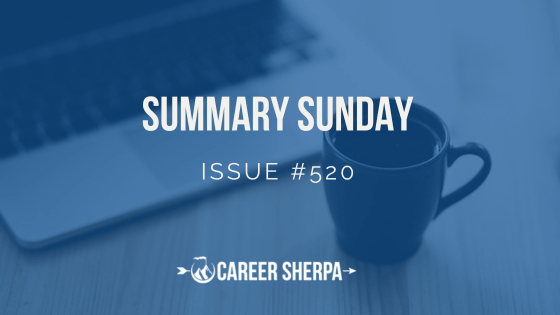
As a professional, the ability to influence key stakeholders is an important skill to have if you want to achieve success in your career and help your company reach its goals. It’s not an easy skill to master, but with practice and a few helpful tips, you can learn how to successfully manage and influence key stakeholders in your line of work.
We recently asked our executives for their expert advice on how to influence key stakeholders.
Here are their responses…
Ana Smith, Talent Architect & Global Learning Strategist
Influencing top stakeholders can be a real challenge, but it’s not impossible. It just demands focus, strategy, execution, and follow-up.
For this article, I wanted to bring forward some of the most common yet not as well-known frameworks that can be used to influence top stakeholders. Some of the most common frameworks include:
- The Power/Interest Grid: This framework helps you to identify the stakeholders who have the most power and the most interest in a particular issue. The stakeholders with the most power and interest are the ones who are most likely to influence the outcome of an issue.
- The Stakeholder Analysis Matrix: This framework helps you to identify the stakeholders who are most important to your organization. The stakeholders who are most important are the ones who you need to focus on influencing.
- The Stakeholder Engagement Framework: This framework provides a step-by-step guide to engaging with stakeholders. The framework helps you to identify the stakeholders, understand their needs and interests, build relationships with them, and influence them to support your goals.
These are just a few that can be used to influence top stakeholders. The best framework for you will depend on the specific situation and the stakeholders involved.
Some additional concepts that we should not forget about the topic are:
- Be clear about your goals. What do you want to achieve by influencing the stakeholders? Once you know your goals, you can tailor your approach accordingly.
- Build relationships with the stakeholders. The more you know about the stakeholders and the more they trust you, the more likely they are to be influenced by you.
- Be respectful of the stakeholders’ needs and interests. Don’t just try to force your agenda on the stakeholders. Instead, try to find ways to meet their needs and interests while also achieving your own goals.
- Be (very, very) patient. It takes time to build relationships and influence people. Don’t expect to see results overnight.
Ana Smith helps people & organizations achieve their full talent potential by developing and co-creating people strategies and customized solutions, and turning them into impactful outcomes and collaborative relationships, using coaching as the “red thread.”
Michael Willis, Sports Business Operations Executive

A stakeholder in sports is an individual or organization whose attributes and actions influence the success of the NFL. Influencing stakeholders should be in every NFL executiveâs toolkitâthe art of building a partnership that buys into your companyâs ideas and culture. In the sports arena, I have identified three types of stakeholders to influence.
1. Participants
Participants are the players, coaches, team staff, and others fundamentally linked to the team and the NFLâs success.
Players at all levels look to a well-regulated sport to offer them opportunities to participate in the game safely with the security of good medical care, salary, and benefits to last them for a long time.
2. Spectators
Spectators influence the financial success of the team. Teams raise revenue from the spectators through ticket sales, concessions, merchandise, and apparel sales. The NFL needs spectators to consume the games in person or on television. Networks pay the NFL a lot of money for the rights to air their games.
3. Financial Stakeholders
The NFL has financial stakeholders to influence to keep revenue flowing in. Major NFL stakeholders are the TV networks covering the pre-season, regular season, and postseason games.
Also, the NFL has significant sponsorship agreements that provide game-day equipment and supplies, and also commercial advertising revenue.
Michael Willis has 18+ years of experience working with accounting & sports organizations and has managed P&Ls of $10M – $125M+ with budgets of $3M-$50M+. He worked for the NFL for 22 1/2 years, mainly with the game officials working on the financial/accounting side of the business.
Lynn Holland, VP Sales & Business Development

âAs a businessperson, you are in sales. You may be selling your team on an idea, convincing your boss to champion a new tech tool to make your business life more efficient, or you may sell a product, service, or technology to a buying committee.
Executives want to participate with low-risk, high-results initiatives so how can you achieve buy-in?
As a SaaS tech seller who helps founders get to market and build early revenue, hereâs a 9-step framework I use:
1. Do your research to know the need, how itâs solved, your audienceâs selfish desires and motives, and how you will co-sign with accountability to achieve the proposed outcome.
2. Prime your audience so they know what they are going to hear in the context that you want them to act and why.
Example: âI think we have an opportunity to fill a gap in our (fill in the blank) process that if we address it, weâll add/improve (fill in the blank).â
3. Express why this matters.
Example: âToday this is a problem in that weâre (fill in the blank).”
- Exposed to potential risks
- Operating with unnecessary time, costs, errors, etc.
- Missing an opportunity for profitability
- Creating friction in the customer/employee journey
4. Illustrate the problem and a solution with a story with statistics to create emotion/care.
5. Personalize.
- W.I.I.F.M (whatâs in it for me â your boss, DM)
- W.I.I.F.T (whatâs in it for âthemâ â the greater good of teammates, the division, market served, etc. )
- How
- How much
- How quickly this helps them directly (return)
- Steps for accountability to achieve the outcome
6. Outline major steps and timeline for how youâll optimize/execute.
7. Give a case study as proof â an example of implementing it and the results (i.e., efficiencies, fewer errors, lower turnover, etc.)
8. Give the top 2-3 risks to the success of the ask and how you’ll mitigate to address likely questions youâll get asked.
Example: âHere are the potential risks if (fill in the blank) doesnât work, but here is the backup plan.â
9. Ask “When can we get started?”
Lynn Holland is a business development executive with 18+ years of experience taking operational, IoT & retail technologies, products, & consumer engagement to market with a focus in petroleum & convenience retail.
Carla Biasi, Personal Stylist

Success is all about relationships. Find out the key stakeholders in your organization and establish a healthy rapport with them. Find out how they became major players and look for similarities in your own work.
People love to talk about themselves so be genuine and ask questions. Learn from the best. Many top-level professionals love to help up-and-comers in their careers so show sincerity when getting to know these people in your organization.
One day you can be a key stakeholder and help others along their way.
Carla Biasi is a personal stylist living on the Mississippi Gulf Coast. She currently has her own business and works part-time at an upscale women’s boutique and as a virtual and kit stylist for a womenâs specialty brand.
Kathryn Marshburn, Music Program Manager

Who is a stakeholder?
A stakeholder is someone who is affected by or will be affected by your brand.
Roadmapping stakeholders and how to build your key stakeholder relationships will be solidified by mapping and identifying what level of interest they have, which will help build your brand. When you think about how you interact with your stakeholders, you remember that your brand and your reputation are at stake.
There are two different types of stakeholders: internal and external.
Stakeholder mapping in this example will look into internal stakeholders.
It’s important to ask yourself a few questions:
- What are these people responsible for?
- What do they care about when considering my brand activity?
- Do they provide advice or funding?
4. Examples of internal stakeholders: receptionist, marketing team members, sales director, or board of directors.
Start by listing people and departments. Although each project will have a different approach, identifying where each stakeholder resides is useful for organizing and maximizing your time.
- Rank stakeholders by interest (1=Most Interest, 2=Some Interest).
- Plot key stakeholders with where they rank.
- If they have high interest, manage closely.
- If they have some interest, keep them informed.
To grow your brand, building a stakeholder map is essential for effective stakeholder management.
Kathryn Marshburn has spent 12+ years in the music and gaming industries guiding teams on identifying targeted goals with an agile approach resulting in driving revenue and reducing risk.
Lisa Perry, Global Marketing Executive

To be effective in organizations today, it’s more important than ever to be able to influence others because of the increased pressure on driving results. Here are 10 tips to influence key stakeholders:
- Build Strong Relationships: You can achieve this through personal connections, regular communication, understanding their goals, offering personalized solutions, and aligning with their interests.
- Be An Expert: To establish yourself as an expert, keep informed on the latest trends, technologies, and news. Share your expertise through thought leadership content.
- Keep The Bigger Picture In Mind: It is essential to understand the broader business objectives and how your department’s efforts can support them. This approach helps you make decisions that align with the organization’s goals.
- Listen Before You Persuade: You must listen well and make your key stakeholders feel heard. Listen to their concerns, opinions, and feedback. Use this information to tailor your solutions to their needs and perspectives.
- Body Language & Tone Is Essential: Be mindful of your body language and tone of voice, as it’s critical to conveying the right message. Use confident and positive body language to get your message effectively communicated. Ensure that your tone is friendly, respectful, and professional.
- Find Common Ground: Going out of your way to find areas of agreement and using them as a starting point for discussion will go a long way. This approach can help build a relationship of trust and cooperation.
- Provide Data-Driven Insights: Key stakeholders are looking for tangible results. Provide them with data-driven insights that demonstrate the overall effectiveness and impact on the organization and how they align with the overall business objectives.
- Give People What They Want: People are more likely to be influenced when they feel their needs are met. Offer solutions that align with stakeholders’ interests, preferences, and values.
- Employ Reciprocity: If you give something, it’s more likely that you’ll receive something in return. Offer value to stakeholders through personalized solutions, insights, and expertise. This approach can help build a relationship of mutual benefit.
- Map A Strategy: Identify key stakeholders you need to influence. In some cases, you can influence a stakeholder directly, while in others, you may need to identify other stakeholders who influence the person you want to influence.
Lisa Perry helps companies build leadership brands, driving loyal customers & delivering profitability. She does this through a process that builds brands consumers love. Her goal is to help companies develop, monetize, and grow their brands.
How do you influence key stakeholders? Join the conversation inside Work It Daily’s Executive Program.
































